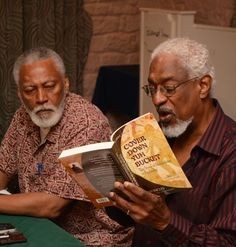Teacher Question:
What are your thoughts on teaching syllable division patterns? I recently came across some new research from Devin Kearns and it made me start thinking about if all the time programs spend teaching syllable division patterns is really justified. If teaching syllable division is not time well invested, what type of instruction would you recommend replacing it with?
Shanahan response:
I was training for a 500-mile bike trip. Three of the days’ rides would be centuries (100 miles plus). The practice was making my back ache and my knees hurt, but I felt no closer to being able to accomplish those distances. They seemed absolutely impossible. I was so discouraged I I wanted to drop out; there is no shame in knowing your limitations.
But I didn’t quit. I pedaled all 500 miles and was even charging at the end.
What turned things around? I had an epiphany. It dawned on me that I would never be able to pedal 100 miles and that no one else could either. That realization made all the difference. You see, though I couldn’t ride a century, I could easily ride 10 miles. So, to reach my goal, I just had to ride 10 miles 10 times.
If you look at the productivity literature – how to solve complex problems or take on overwhelming challenges – the idea of “decomposition” comes up a lot. The experts say if you want to do something hard break the problem into smaller parts.
That, fundamentally, is the idea of syllabication in decoding. When you confront multi-syllable words, it may help to break them into smaller parts.
It’s kind of like that old joke:
How do you eat an elephant?
One bite at a time.
That may seems pretty sensible, but where do you bite?
That’s the problem when it comes to splitting up English words. It isn’t always clear how to divide things and what do you with the vowels once you have bite size chunks?
Syllables matter in English. The consistency of spelling patterns and their relationship to phonemes and pronunciations is determined, in part, by where particular letters appear in syllables rather than where they appear in words (Venezky, 1967), and the perception of vowel sounds (the central element of the syllable) is key to successful early phonemic awareness development (Linnea Ehri has described the perception of the syllable as paving “the way for entre into benefiting from phonics instruction”). The syllable has been found to be an essential unit in phonological processing (Ecalle & Magnan, 2007). In other words, syllables are pretty basic.
I, too, read the Kearns study (Kearns, 2020). You seem to think it says something about whether to teach syllables. I don’t see it that way (a close reading of the study suggests Kearns doesn’t either – and his other work confirms that (Kearns & Whaley, 2019)). Remember Kearns only examined a single category of syllabication patterns (a group governing the pronunciation of single vowels). He found a high degree of reliability in VCCV words (such as rab-bit) and a reasonable degree of consistency in VCV words of two syllables (though that division rule didn’t do so well with longer words). He also reported that there were particular spellings with highly reliable pronunciations within that universe of words (such as “ic” and “wa”). And, that still leaves us with all of the other kinds of syllables such as sion, tion, ble, or a raft of common morphological units that operate consistently as syllables in our language (e.g., un, pre, trans, pro, ing, ed). None of these were the focus of his analysis.
I take it that Kearns was just reminding us that simplistic approaches to decoding instruction that encourage students to expect a simple and consistent set of pronunciation rules would be a poor reflection of the facts of the English spelling system.
Students need to develop a mental set for diversity or variability when it comes to word recognition. Teaching syllabication as a rigid set of “rules” makes no sense, since our orthography doesn’t work like that. Telling students that VCV patterns are to be divided after the first vowel may benefit the reading of words like label or tiger, but it plays hob with words such as statue.
We must remember that the sounding out of words is only intended to provide readers with approximate – rather than exact – pronunciations anyway. It may be possible to determine that the word is statue if you starts with “stay-tue” but it would be infinitely more likely if “stat” was the starting point.
The solution to that problem isn’t proscribing syllabication training, but to make it more conditional (studies like that by Kearns can be useful for informing those curriculum choices). In any event, it is wisest to tell budding readers that when beavering away at an unknown word with that VCV pattern, they should try splitting the word both before and after the consonant, trying out at least a couple of the high probability pronunciation possibilities (there are more choices than those two, with schwa being a frequent culprit – Rosemary Weber (2018) provides an interesting analysis of the role of the schwa in word perception).
As I’ve written many times before, we can’t determine what works in teaching through descriptive studies of the brain or language. Such studies may help explain why some instructional approaches work or provide valuable insights about new pedagogical possibilities. But they can’t reveal what works – which is what any real science of reading instruction ultimately needs to be about.
There aren’t a huge number of instructional studies to go on, and some of those found that syllable teaching didn’t work. However, an insightful analysis of these studies (Bhattacharya & Ehri, 2004) sorts this out nicely: Those regimes that taught rigid spelling rules for syllabication didn’t improve reading, while those that aimed at fostering conditionality and flexibility in the use of syllables to decode words did significantly better. Also, since that time, syllable instruction studies have been consistently positive in their results (Diliberto, Beattie, Flowers, & Algozzine, 2009; Doignon-Camus & Zagar, 2014; Ecalle, Kleinsz, & Magnan, 2013; Ecalle & Magnan, 2007; Gray, Ehri, & Locke, 2018).
Your letter makes it sound as if teachers spend a lot of time teaching syllabication. I doubt that and hope it isn’t the case. In studies that found syllabication instruction to improve word recognition and reading comprehension, students received only 2-9 hours of teaching (yeah, even 2 hours of syllable training was beneficial).
Given all of this, I would definitely teach syllabication. It clearly has value. Though the amount of such teaching can be pretty limited. Nevertheless, decoding instruction is not primarily or mainly about teaching students to sound out words. Such teaching, if successful, must instigate readers to perceive patterns and conditionalities within words (that’s what orthographic mapping and statistical learning are all about).
So, yes, teach syllabication, but expose kids to the exceptions and teach them to use these divisions conditionally and flexibly. Approach words both through decoding and spelling (see Richard Gentry’s fine work on this). Focus considerable attention on the morphological units within words as well (for this I turn to the book Words Their Way, and to Peter Bowers’ WordWorks Literacy Centre.)
Please pass the elephant.
References
Bhattacharya, A., & Ehri, L. C. (2004). Graphosyllabic analysis helps adolescent struggling readers read and spell words. Journal of Learning Disabilities, 37(4), 331-348. doi:http://dx.doi.org.proxy.cc.uic.edu/10.1177/00222194040370040501
Diliberto, J. A., Beattie, J. R., Flowers, C. P., & Algozzine, R. F. (2009). Effects of teaching syllable skills instruction on reading achievement in struggling middle school readers. Literacy Research and Instruction, 48(1), 14-27. doi:http://dx.doi.org.proxy.cc.uic.edu/10.1080/19388070802226253
Doignon-Camus, N., & Zagar, D. (2014). The syllabic bridge: The first step in learning spelling-to-sound correspondences. Journal of Child Language, 41(5), 1147-1165. doi:http://dx.doi.org.proxy.cc.uic.edu/10.1017/S0305000913000305
Ecalle, J., Kleinsz, N., & Magnan, A. (2013). Computer-assisted learning in young poor readers: The effect of grapho-syllabic training on the development of word reading and reading comprehension. Computers in Human Behavior, 29(4), 1368-1376. doi:http://dx.doi.org.proxy.cc.uic.edu/10.1016/j.chb.2013.01.041
Ecalle, J., & Magnan, A. (2007). Development of phonological skills and learning to read in French. European Journal of Psychology of Education, 22(2), 153-167. doi:http://dx.doi.org.proxy.cc.uic.edu/10.1007/BF03173519
Gray, S. H., Ehri, L. C., & Locke, J. L. (2018). Morpho-phonemic analysis boosts word reading for adult struggling readers. Reading and Writing: An Interdisciplinary Journal, 31(1), 75-98. doi:http://dx.doi.org.proxy.cc.uic.edu/10.1007/s11145-017-9774-9
Kearns, D.M. (2020). Does English have useful syllable division patterns? Reading Research Quarterly, 55(S1), S145– S160. https://doi.org/10.1002/rrq.342
Kearns, D. M., & Whaley, V. M. (2019). Helping students with dyslexia read long words: Using syllables and morphemes. Teaching Exceptional Children, 51(3), 212–225. https://doi.org/10.1177/0040059918810010
Venezky, R. L. (1967). English orthography: Its graphical structure and its relation to sound. Reading Research Quarterly, 2(3), 75–105. https://doi.org/10.2307/747031
Weber, R. (2018). Listening for schwa in academic vocabulary. Reading Psychology, 39(5), 468-491. doi:http://dx.doi.org.proxy.cc.uic.edu/10.1080/02702711.2018.1464531







Comments
See what others have to say about this topic.